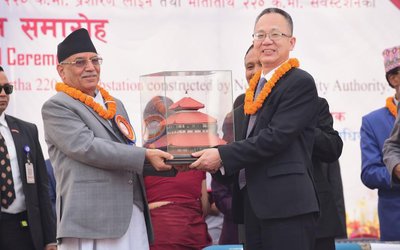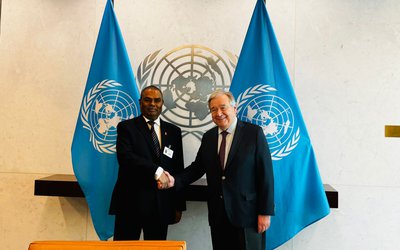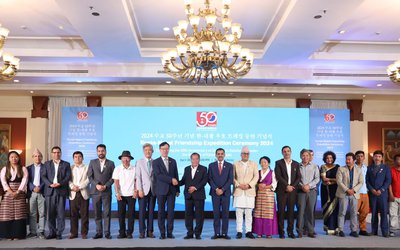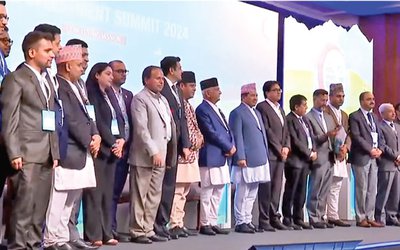Cholera like typhoid is spread by fecal oral transmission and is endemic in Nepal. Thebacteria, vibrio cholerae, produces a potent toxin which may lead to severe dehydratingdiarrhea and death in 12 hours. Clinically however a cholera- buginfected personmay span a spectrum from being an asymptomatic carrier to a severely debilitated patient. Even in the medical profession, many did not know that a cholera carrier (just like a healthy typhoid carrier) existed until the Haiti outbreak.
Most bacteria when taken by mouth are killed by the acidic environment of the stomach. ( This is one reason why people who take anti- acid medicines for their gastritis or peptic ulcer disease are more prone to bacterial gastroenteritis because the acid medium is not there). The cholera bacteria that survive the stomach acid can reach the small intestine helped by their tail or flagella and cling on to the mucus membrane lining the small intestine. In the small intestine is where the cholera bug wreaks havoc by discharging toxins and causing sometimes-unending diarrhea. The cholera bug that enters the water supply system will continue to infect other people who drink the contaminated water. So in an outbreak situation it is important to identify the source of the outbreak even so that the illness can be prevented from spreading. Of course in the first place if the hygienic conditions are excellent, the cholera bug should not spread.
Cholera, although a localized phenomenon in South Asia for centuries, has demonstrated the ability to spread internationally. Ten months after the devastating earthquake of Jan 12, 2010 in Haiti, cholera raised its ugly head there for the first time in a century. The outbreak afflicted 300,000 people and claimed 4,500 lives and continues to be an ongoing problem. The source of this cholera has been a topic of serious debate. There are three theories.
The first suggests that subsequent to the earthquake, ocean currents from the Gulf of Mexico arrived with the pathogen to the shores of Haiti. The second hypothesis holds that a local non pathogenic strain endemic in Haiti naturally mutated into a virulent pathogen. The third and controversial theory attributes the spread of cholera in Haiti to an infected human (possibly a carrier) from an endemic country outside of the Americas.
The controversy about the origin of the pathogen was important enough to trigger the formation of an independent panel (comprising of four experts) by the United Nations. The recently- published final report from this panel implicatesno individual or country. However it unambiguously notes that the cholera bacteria was in all likelihood introduced into Haiti with a pathogenic strain of the current South Asian variety, thus supporting the third hypothesisabove.
The report makes important recommendations for all United Nations personnel and emergency responders travelling from cholera endemic countries which includes India, Bangladesh, Pakistan and Nepal. Crucially it recommends that these personnel receive a dose of appropriate antibiotics before departure or be screened with a sensitive method to confirm absence of asymptomatic carriage.
Because most of these countries may not have a sensitive method of screening, a clear option would be to check with a knowledgeable physician and have administered a one day prophylactic, effective antibiotic course (of either azithromycin or doxycycline) before departure.This indeed may be an option to strongly consider before the ‘‘s--- hits the fan”again !
- QATAR AMIR’S STATE VISIT: Five Agreements
- Apr 28, 2024
- TANAHU HYDROPOWER PROEJCT: A Significant Achievement
- Apr 15, 2024
- AMBASSADOR HANAN GODAR: Sharing Pain With A Nepali Family
- Mar 30, 2024
- VISIT OF KfW AND EIB TO NEPAL : Mission Matters
- Mar 25, 2024
- NEPAL BRITAIN SOCIETY: Pratima Pande's Leadership
- Mar 24, 2024
















